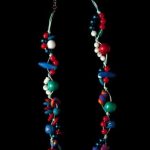Diamond jewelry has long been a symbol of elegance and luxury, captivating the hearts of many across the globe. From engagement rings to dazzling necklaces, diamond jewelry holds a special place in the world of fashion and personal adornment. But have you ever wondered how these beautiful pieces are made on such a large scale? This article explores the fascinating journey of how diamond jewelry is mass produced, uncovering the meticulous processes and craftsmanship behind each stunning creation.
Diamonds are treasured for their brilliance, durability, and rarity. They possess a timeless allure that has made them an enduring emblem of love and status. The allure of diamond jewelry lies not only in its aesthetics but also in its ability to hold significant emotional value for those who wear it.
Understanding the value of diamonds is crucial when unraveling the mystery behind their mass production. The 4Cs – cut, color, clarity, and carat weight – play a vital role in determining the worth of a diamond. These characteristics determine its brilliance, sparkle, overall appearance, and ultimately its price tag. Unveiling these factors leads us to appreciate just how much expertise and precision is required throughout every step of the manufacturing process.
From extracting diamonds from mines to transforming them into exquisite works of art, this article delves deep into each stage involved in bringing diamond jewelry to life. We will explore how diamonds are sorted and graded based on their individual attributes before delving into the creative process of designing and crafting these sparkly gems into striking pieces that capture our attention.
Join us on this enlightening journey as we uncover the artistry, technology advancements, quality control standards, branding strategies used by companies all over the world when it comes to mass producing diamond jewelry. Prepare to be amazed at the meticulous processes that go behind creating these stunning accessories loved by many worldwide.
Understanding the value of diamonds
When considering purchasing diamond jewelry, it is important to understand the value of diamonds. The value of a diamond is determined by several factors, commonly known as the 4Cs: cut, color, clarity, and carat weight. These factors play a significant role in determining the quality and price of a diamond.
- Cut: The cut of a diamond refers to how well it has been shaped and faceted. A well-cut diamond reflects light in a way that maximizes its brilliance and sparkle. The proportions and symmetry of the cut greatly impact how light travels through the stone. Different cuts include round brilliant, princess, emerald, and pear-shaped among others.
- Color: Diamond color is graded on a scale from D (colorless) to Z (light yellow or brown). The less color a diamond has, the higher its value. Colorless diamonds allow more light to pass through them and appear brighter. However, fancy colored diamonds with intense hues such as blue, pink or yellow can be exceptionally valuable due to their rarity.
- Clarity: Diamond clarity refers to the presence of internal or external flaws called inclusions or blemishes respectively. These natural characteristics are formed during the crystal’s growth process deep within Earth’s mantle under extreme heat and pressure. Clarity is graded from flawless (no visible inclusions) to included (inclusions visible without magnification). Diamonds with higher clarity grades are considered more valuable.
- Carat Weight: Carat weight measures a diamond’s size and is often associated with its worth; however, it does not determine its overall beauty or quality. One carat equals 200 milligrams or one-fifth of a gram. Larger diamonds are rarer than smaller ones resulting in an exponential increase in price as carat weight increases.
Understanding these 4Cs is crucial because they allow consumers to make informed decisions when purchasing diamond jewelry. By assessing these factors, buyers can determine the quality and value of a diamond, ensuring that they are getting the best possible product for their money. Whether for investment purposes or personal adornment, understanding the 4Cs will enable customers to choose diamonds that meet their specific needs and preferences.
The diamond mining process
The diamond mining process plays a crucial role in the production of diamond jewelry. It is a complex journey that begins with exploration and ends with the delivery of rough diamonds to cutting centers where they will be transformed into dazzling gems. This section will delve into the various stages of the diamond mining process, shedding light on the steps involved in bringing these precious gemstones from deep within the earth to the hands of skilled craftsmen.
The first stage in the diamond mining process is exploration, where geologists and engineers search for potential diamond deposits. Once a prospective area is identified, large-scale mining operations are established. These operations can range from open-pit mines, which involve removing soil and rock to access diamonds close to the surface, to underground mines, which require tunnels to be dug deep beneath the earth’s crust.
Once diamonds are extracted from the mines, they undergo a sorting process. This involves separating diamonds from other minerals and materials based on their size, shape, and density. The sorted diamonds are then transported to cutting centers located around the world. These cutting centers, also known as polishing centers, are where skilled artisans transform rough diamonds into brilliantly cut gemstones that will eventually become part of exquisite jewelry pieces.
| Stage | Description |
|---|---|
| Exploration | Geologists identify potential diamond deposits |
| Mining Operation | Diamonds are extracted using various methods such as open-pit or underground mining |
| Sorting | Diamonds are separated from other minerals based on their physical characteristics |
| Transportation | Rough diamonds are transported to cutting centers |
| Cutting and Polishing | Rough diamonds are transformed into brilliantly cut gemstones |
Overall, the diamond mining process involves a series of intricate steps that are necessary to bring these precious stones from the earth’s depths to the hands of skilled artisans. It is a journey that starts with exploration and ends in cutting centers, where rough diamonds are transformed into dazzling gems ready to be set into jewelry.
Sorting and grading diamonds
Sorting and grading diamonds is a crucial step in the diamond jewelry production process. It involves carefully categorizing diamonds based on their unique characteristics, such as cut, color, clarity, and carat weight. This meticulous process ensures that each diamond is accurately assessed and matched with the appropriate jewelry design.
To begin the sorting and grading process, diamonds are first sorted according to their size. This helps in creating a more efficient workflow. Next, gemologists examine each diamond individually to determine its various quality factors. The 4Cs-cut, color, clarity, and carat weight-are the primary criteria used for grading diamonds.
- Cut: The cut of a diamond refers to how well it has been crafted into its final shape. The quality of the cut significantly affects the brilliance and sparkle of the diamond.
- Color: Diamonds come in a range of colors from completely colorless to light yellow or brown hues. The Gemological Institute of America (GIA) grades diamonds on a scale from D (colorless) to Z (light yellow or brown).
- Clarity: Clarity refers to the absence of internal or external flaws in a diamond. Gemologists assess the presence and visibility of any blemishes or inclusions within each stone.
- Carat Weight: Carat weight measures how much a diamond weighs. One carat is equivalent to 200 milligrams. The larger the carat weight, the rarer and more valuable the diamond.
Once each characteristic has been graded individually, an overall grade is assigned to the diamond based on these assessments. These grades help jewelers determine how best to use each diamond in their designs.
The sorting and grading process is essential not only for ensuring consistent quality but also for pricing purposes. Diamonds with higher grades in all four categories will command a higher price due to their rarity and desirability among consumers.
By meticulously sorting and grading diamonds based on their characteristics, manufacturers can create a selection of diamonds that cater to different preferences and budgets. This process enables them to efficiently match diamonds with specific designs, resulting in stunning diamond jewelry that meets the diverse demands of the market.
Designing diamond jewelry
Designing diamond jewelry is a crucial step in the mass production process. It involves taking a concept or idea and transforming it into a tangible piece of jewelry that showcases the beauty and brilliance of diamonds. This section will delve into the creative process behind designing diamond jewelry, from initial sketches to the final product.
The first step in designing diamond jewelry is to conceptualize an idea. Jewelry designers draw inspiration from various sources such as nature, art, culture, and current fashion trends. They create sketches or use computer-aided design (CAD) software to bring their ideas to life. These initial designs serve as a blueprint for craftsmen and manufacturers who will later produce the jewelry.
Once the initial design is finalized, it undergoes further refinement and detailing. This involves considering aspects such as the type of metal setting, gemstone placement, and overall aesthetics. The designer may also collaborate with other specialists like gemologists or metallurgists to ensure that both the diamonds and metals used are of high quality.
Next comes the actual production stage where skilled artisans transform the design into a physical piece of jewelry. They carefully select diamonds based on their quality and characteristics outlined in the grading process discussed earlier in this article. These diamonds are then precisely set into the metal according to the design specifications.
The art of diamond cutting
Diamond cutting is a delicate and intricate art form that plays a vital role in shaping diamonds for use in jewelry. The process of cutting a diamond involves a combination of technical skill, precision, and artistic vision. Diamond cutters are highly trained professionals who work with precision tools to reveal the full brilliance and beauty of the stone.
The primary goal of diamond cutting is to enhance the natural characteristics of the rough diamond while maximizing its sparkle and brilliance. This is achieved by carefully examining the stone’s shape, size, and internal flaws before determining the best way to cut it. The cutter must consider various factors such as symmetry, proportion, and facet arrangement in order to create a perfectly balanced and visually appealing finished product.
During the cutting process, diamond cutters use specialized tools such as diamond saws and lasers to shape the rough stone into its desired shape. From traditional round brilliant cuts to more unique shapes like princess or emerald cuts, each design requires precision and attention to detail. Cutters often make calculations based on mathematical formulas to ensure that each facet is precisely angled to reflect light in a way that enhances the overall beauty of the stone.
Once the diamond has been cut into its final shape, it undergoes polishing to further enhance its brilliance. This involves carefully smoothing out any rough edges or imperfections left behind during the cutting process. Polishing not only improves the aesthetic appeal of the diamond but also helps maximize its ability to reflect light, resulting in an exceptional sparkle.
Overall, diamond cutting is both an art form and a science that requires years of training and experience. It is through this meticulous craftsmanship that diamonds are transformed from rough stones into dazzling gems that are ready for use in exquisite jewelry pieces.
| Diamond Cutting Process | Tools Used |
|---|---|
| Examine rough diamond for shape, size, and flaws | Magnifying loupe |
| Determine the best way to cut the diamond | Diamond saw, computer-aided design (CAD) software |
| Shape the rough diamond into its desired shape | Diamond saws, lasers |
| Create precise facets and angles on the diamond | Cutting laps, polishing wheels |
| Polish the diamond to enhance its brilliance and sparkle | Powdered diamond paste, polishing tools |
Diamond jewelry manufacturing techniques
In the world of diamond jewelry manufacturing, mass production techniques are employed to meet the high demand for these exquisite pieces. This section delves into the various methods utilized in the mass production of diamond jewelry.
One of the key techniques used in mass production is casting. Casting involves creating a mold or pattern, usually made from metal, which is then filled with molten metal to create the desired piece of jewelry. This method allows for quick and efficient production of multiple pieces with consistent quality and accuracy. Casting can be done using different materials such as gold, silver, or platinum, depending on the design and requirements of the jewelry.
Another technique used in mass production is stamping. In this process, pre-formed metal sheets are stamped using specialized machinery to create shapes and patterns. This technique is particularly useful for producing thin and intricate designs quickly and economically. Stamping also offers flexibility in terms of incorporating additional embellishments or details into the final product.
| Mass Production Technique | Description |
|---|---|
| Casting | Involves creating a mold or pattern filled with molten metal to produce multiple pieces with consistent quality. |
| Stamping | Uses specialized machinery to stamp pre-formed metal sheets into desired shapes and patterns. |
Finally, computer-aided design (CAD) technology has revolutionized diamond jewelry manufacturing. With CAD software, designers can create detailed digital models of jewelry pieces before they are physically produced. This enables greater precision and streamlines the entire production process. CAD technology also allows for customization options where customers can personalize their jewelry by making changes to existing designs or creating entirely unique pieces.
With these mass production techniques, diamond jewelers can meet the demand for diamond jewelry while maintaining efficiency and consistency in their production processes. While some pieces may still require handcrafted detailing or gemstone setting, these methods enable the creation of a large volume of diamond jewelry without compromising on quality or design.
The role of technology
Technology has played a significant role in revolutionizing the diamond jewelry production process. Advancements in technology have not only improved the efficiency and accuracy of diamond cutting and manufacturing techniques but have also allowed for greater creativity and innovation in design. In this section, we will explore the various ways in which technology has transformed the production of diamond jewelry.
Automated Diamond Cutting Machines
One of the most notable advancements in technology is the development of automated diamond cutting machines. These machines use computer-aided design (CAD) software to precisely cut diamonds according to specific measurements and designs. This allows for greater precision and consistency, resulting in high-quality cuts that enhance the brilliance and sparkle of diamonds.
Automated cutting machines also increase productivity as they can work continuously without fatigue or human error. They are programmed to follow predetermined patterns, resulting in faster turnaround times for producing diamond jewelry. Additionally, these machines are equipped with advanced imaging systems that analyze each diamond’s characteristics, such as its shape and clarity, ensuring optimal utilization of the rough stone.
3D Printing
Another technological advancement that has revolutionized the diamond jewelry production process is 3D printing. This additive manufacturing technique allows designers to create intricate and complex jewelry designs using computer-generated models. By printing layers upon layers of materials such as metal or resin, 3D printers can produce highly detailed prototypes or even final pieces of jewelry.
The use of 3D printing has opened up new possibilities for customization in diamond jewelry production. Designers can experiment with different shapes, sizes, and textures before committing to a final design. It also enables them to easily create one-of-a-kind pieces tailored to individual customer preferences. Furthermore, 3D printing reduces material wastage compared to traditional manufacturing methods, making it a more sustainable option for mass-producing diamond jewelry.
Laser Technology
Laser technology has revolutionized many industries, and diamond jewelry production is no exception. Laser cutting and engraving machines have become indispensable tools in the manufacturing process. They allow for precise and intricate cuts, enabling designers to create complex patterns and designs on diamonds and other gemstones.
Laser technology also facilitates the creation of personalized engravings on diamond jewelry. Whether it’s a name, a special date, or a heartfelt message, lasers can etch these details with unparalleled accuracy and precision. This level of customization adds value to the final product and enhances the emotional connection between the wearer and their jewelry.
Quality control in diamond jewelry production
Quality control in diamond jewelry production is a crucial aspect of the manufacturing process. It ensures that every piece of jewelry meets the highest standards of excellence and uniformity, guaranteeing customer satisfaction and maintaining the reputation of the brand.
Establishing Standards
One of the primary objectives of quality control in diamond jewelry production is to establish measurable standards for different aspects of the production process. These standards cover various factors such as diamond grading, metal purity, gemstone settings, and overall craftsmanship. By setting these standards, manufacturers can ensure that each piece of jewelry produced adheres to specific quality benchmarks.
Inspection and Testing
To maintain uniformity and excellence, regular inspections and testing are carried out throughout the production process. This involves conducting rigorous quality checks at various stages, from raw materials to finished products. For example, diamonds are inspected for their 4Cs (cut, color, clarity, and carat weight) using specialized equipment such as microscopes and spectroscopes. Jewelry pieces are also tested for durability by subjecting them to various stress tests.
Training and Education
Quality control in diamond jewelry production requires skilled professionals who have a deep understanding of diamonds, gemstones, metals, and manufacturing techniques. Continuous training and education programs are implemented to ensure that these professionals stay updated with the latest industry trends, new technologies, and evolving quality standards. This investment in human resources helps manufacturers maintain consistency in their product offerings.
Certifications
Many reputable diamond jewelry manufacturers obtain certifications from recognized organizations such as the Gemological Institute of America (GIA) or International Organization for Standardization (ISO). These certifications validate that certain quality control practices were followed during production. They provide customers with an assurance that they are purchasing high-quality diamond jewelry.
Branding and marketing of diamond jewelry
Building a Strong Brand Identity
Branding plays a crucial role in the success of any diamond jewelry company. A strong brand identity not only helps companies differentiate themselves from their competitors but also enhances consumer trust and loyalty. To effectively showcase their products to the world, diamond jewelry companies invest considerable resources and effort into building and maintaining their brand.
One important aspect of branding is establishing a unique and recognizable logo, which serves as a visual representation of the company. Many diamond jewelry companies rely on elegant and sophisticated designs that reflect the luxury and exclusivity associated with diamonds. These logos are often used across various marketing channels, including websites, social media, print advertisements, and even packaging.
Another key element in building a strong brand is creating a compelling brand story. Diamond jewelry companies often emphasize their heritage, craftsmanship, or commitment to ethically sourced diamonds in their narratives. By highlighting these aspects, they appeal to consumers who value authenticity and socially responsible practices.
Marketing Strategies
To effectively showcase their products to the world, diamond jewelry companies employ various marketing strategies. One popular approach is collaborating with high-profile celebrities or influencers who can endorse their products. These partnerships not only enhance brand visibility but also help associate the brand with glamour and aspiration.
In addition to endorsements, companies often organize extravagant events or fashion shows to debut new collections or celebrate milestones. These events provide an opportunity for the company to engage directly with customers and create buzz around their latest offerings.
Digital marketing also plays a significant role in showcasing diamond jewelry to a global audience. Companies utilize social media platforms such as Instagram, Facebook, and Pinterest to showcase stunning imagery of their products. They may also employ search engine optimization techniques to ensure their website appears prominently in online searches related to diamond jewelry.
The Power of Advertising
Advertising is another essential component of showcasing diamond jewelry to the world. Companies invest heavily in print advertisements featured in prominent fashion and lifestyle magazines. These ads often feature stunning visuals of diamond jewelry worn by models or celebrities, further enhancing the allure and desirability of the products.
Television commercials are also utilized to reach a wider audience. These commercials often convey a sense of elegance, romance, and luxury to evoke emotions and capture viewers’ attention. Strategic placements during popular television shows or events with large viewership help maximize the reach and impact of these advertisements.
Conclusion
In conclusion, the process of mass-producing diamond jewelry is a truly intricate one that involves various stages and techniques. From the initial mining of diamonds to the final marketing of the finished products, every step is carefully executed to ensure uniformity and excellence. The journey from mines to cutting centers unveils the painstaking sorting and grading process, where diamonds are categorized based on their unique characteristics.
The art of designing diamond jewelry begins with a creative process that starts from sketches and ends with the final product. This creative vision is then brought to life through the art of diamond cutting. Skilled craftsmen meticulously shape each diamond, highlighting its brilliance and maximizing its beauty for use in jewelry pieces.
Technological advancements have revolutionized the production process of diamond jewelry. From automated cutting machines to computer-aided design tools, technology has increased efficiency and precision while maintaining the utmost quality standards. These technological innovations have also made mass production possible without compromising on craftsmanship or individuality.
Lastly, branding and marketing play a crucial role in showcasing these masterpieces to the world. It is through effective marketing strategies that companies can highlight the beauty and allure of their diamond jewelry collections while building trust with consumers.
Overall, mass-produced diamond jewelry combines intricate processes, skilled craftsmanship, advanced technology, and innovative marketing techniques to bring stunning pieces of wearable art into our lives. The beauty and allure of these creations can be appreciated by individuals worldwide who desire not only elegance but also a piece of history that symbolizes beauty, luxury, and eternal love.
Frequently Asked Questions
How is diamond jewelry formed?
Diamond jewelry is formed through a meticulous process that involves several steps. First, rough diamonds are mined from the earth and then carefully sorted based on their color, clarity, carat weight, and cut. These rough diamonds are then sent to specialized diamond cutters who skillfully shape them into the desired cuts such as round brilliant, princess, or emerald cuts. Once the diamonds are cut and shaped, they are inspected to ensure they meet quality standards.
The next step involves selecting a suitable metal setting for the diamond, commonly gold or platinum. Skilled jewelers then use various techniques such as prong setting or bezel setting to securely hold the diamond in place within the metal setting. Finally, additional gemstones or decorative elements may be added to enhance the overall design of the jewelry piece before it undergoes a final inspection and polishing.
How are engagement rings mass produced?
Mass production of engagement rings involves streamlining various manufacturing processes to create multiple identical rings efficiently. Initially, a design concept is created by jewelry designers who carefully consider factors such as current trends and market demand. This design is then translated into a computer-aided design (CAD) file using specialized software. Once the CAD file is ready, it can be used to create molds for casting the rings in large quantities.
The production process typically involves using automated machinery like casting machines or 3D printers to produce replicas of the original ring design in bulk. After casting, each ring goes through various stages of finishing which includes processes like polishing, stone setting (if applicable), and quality control inspections. By utilizing automation and standardized procedures at each stage of production, manufacturers are able to efficiently mass produce engagement rings without sacrificing quality.
How do they get diamonds to stay in jewelry?
To ensure that diamonds stay securely in jewelry settings, various techniques are employed depending on the type of setting used. One common method is prong settings where small metal prongs (usually made of gold or platinum) are bent over the edges of the diamond to hold it in place. These prongs are carefully positioned and tightened around the stone using special tools. An alternative method is bezel setting where a thin metal strip is wrapped around the entire circumference of the diamond, holding it securely in place.
This technique offers additional protection as it fully surrounds the diamond with metal. Another popular approach is pavé setting, where small diamonds are set closely together using tiny metal beads or prongs to create a continuous surface of sparkle. For more complex designs, advanced techniques like channel setting, invisible setting, or tension setting might be employed to ensure diamonds are safely secured. Skilled jewelers with expertise in stone-setting techniques play a crucial role in making sure that diamonds remain secure within their settings for long-lasting durability and wearability of the jewelry piece.

Welcome to my jewelry blog! My name is Sarah and I am the owner of this blog.
I love making jewelry and sharing my creations with others.
So whether you’re someone who loves wearing jewelry yourself or simply enjoys learning about it, be sure to check out my blog for insightful posts on everything related to this exciting topic!





